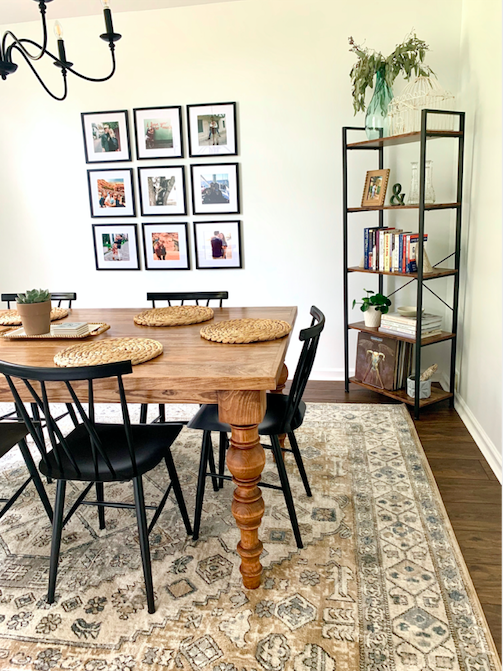Unique Dining Room Table Legs That Will Elevate Your Dining Area
Unique Dining Room Table Legs That Will Elevate Your Dining Area
Blog Article
From Conventional to Modern: Find the Suitable Eating Area Table Legs for Your Design
While traditional designs such as cabriole and turned legs evoke a feeling of classic sophistication, contemporary designs like barrette and geometric alternatives present a chance for striking visual interest. As you consider these components, the inquiry remains: just how can you flawlessly incorporate these varied leg styles to produce a harmonious dining experience?
Understanding Table Leg Styles
The variety of dining area table leg designs can substantially influence both the aesthetics and capability of the space. Each leg style adds special aesthetic components and practical functions, dealing with varied style preferences and usage requirements. Comprehending these styles is important for selecting the best table that straightens with your overall interior decoration vision.
As an example, conical legs use a tidy, traditional appearance that can improve an area's style, while stand bases offer stability and make the most of legroom, making them ideal for smaller rooms. Hairpin legs, a hallmark of mid-century modern design, introduce an industrial style, allowing for an airy, open feeling. Trestle legs evoke rustic beauty, supplying durable support and a feeling of timelessness.
Wooden legs can bring warmth and texture, whereas metal choices typically convey a sleek, modern ambiance. Eventually, comprehending table leg styles is crucial for producing a natural eating location that shows personal style while making sure functionality and convenience.
Conventional Table Leg Options
When picking dining-room table legs, traditional choices often embody timeless elegance and workmanship. These layouts mirror a rich heritage and a dedication to high quality, making them suitable for those who value classic looks.
Among the most iconic traditional leg styles is the cabriole leg, identified by its elegant bent form. This style commonly includes ornamental makings and is most commonly located in Queen Anne and Chippendale furniture. One more popular option is the transformed leg, which flaunts a collection of smooth, rounded shapes that offer a timeless appearance while preserving security.
Additionally, the straight leg, while basic, uses a unadorned and tough framework that can blend effortlessly with a selection of tabletop styles. For those drawn to ornate describing, claw-and-ball feet legs stimulate a sense of majesty and can work as a magnificent centerpiece in any kind of eating room.
Lastly, pedestal bases, although not strictly legs, provide a different standard option that enables for ample legroom and can be magnificently sculpted. Each of these typical leg designs adds to the total ambiance of a dining-room, weding feature with aesthetic allure.

Modern Table Leg Designs
Modern table leg styles provide a diverse array of styles that highlight ingenious materials and tidy lines. These designs usually prioritize capability while offering as striking centerpieces within a dining area. Minimal appearances prevail, with legs crafted from materials their website such as metal, glass, and engineered timber, which add to a modern and airy feeling.
One popular design is the hairpin leg, characterized by its slender, conical framework that gives stability without frustrating the table top (dining room table legs). This design is usually found in mid-century contemporary furnishings and can effortlessly complement various dining table shapes. An additional fad is making use of geometric shapes, where legs might handle asymmetrical or angular kinds, adding aesthetic rate of interest and a touch of virtuosity

Blending Designs for Special Spaces
Often, property owners look for to produce unique eating rooms that reflect their individual design by blending numerous design elements. This technique permits the incorporation of diverse aesthetic appeals, causing a harmonious yet distinct atmosphere. Pairing a rustic wooden table with streamlined, contemporary steel legs can develop an eye-catching contrast that raises the space's general appeal.
Additionally, integrating vintage table legs with modern tabletops can stimulate a sense of background while maintaining a modern-day sensibility. Such combinations not only display individual taste yet also encourage imagination, permitting house owners to curate a room that feels both personal and welcoming.
Shade plays an essential role in this blending process; picking table legs that enhance or comparison with the existing color design can improve visual rate of interest. As an example, whitewashed legs can soften the boldness home of a dark table surface, developing a balanced aesthetic.
Tips for Picking the Right Legs
Picking the right table legs is crucial for achieving both performance and aesthetic charm in your eating room. Begin by considering the total design of your space. Standard settings profit from legs that include intricate carvings or transformed designs, while modern areas may call for streamlined, minimal styles.
Following, evaluate the elevation and security of the legs. dining room table legs. Standard dining tables vary between 28 to 30 inches in height, so ensure the legs enhance this measurement for comfort. In addition, robust materials, such as wood or metal, can boost security and long life
Examine the leg shape too-- alternatives consist of straight, tapered, or pedestal styles. Straight legs supply a classic look, while conical legs can add a touch of sophistication. Pedestal bases give adequate legroom and are excellent for smaller rooms.
Final Thought
In recap, picking the excellent dining area table legs requires cautious factor to consider of both traditional and contemporary designs. By integrating leg Read Full Report design, elevation, and material with the total decoration, a cohesive and inviting atmosphere can be attained.
The selection of eating room table leg styles can dramatically influence both the appearances and capability of the area. Eventually, comprehending table leg designs is important for creating a natural eating location that mirrors personal style while ensuring practicality and convenience.One of the most famous standard leg styles is the cabriole leg, identified by its stylish rounded shape. Straight legs offer a timeless appearance, while conical legs can include a touch of style.In recap, selecting the ideal eating room table legs needs cautious consideration of both conventional and modern-day designs.
Report this page